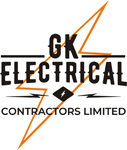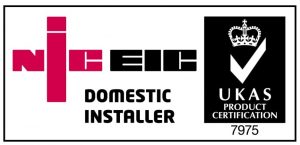A lot of people find out they have a looped electrical supply after purchasing an Electrical Vehicle (EV); causing multiple complications when installing their EV Charging Unit. Here we discuss the pitfalls of a looped supply, and what you need to do to get your supply un-looped.
What is a looped supply?
Looped electrical supply are most common in older buildings, older installations and terraced buildings. To identify a looped supply you need to look at your electric meter. In there will be many components; bringing electricity into the meter and out to your home.
Most commonly a looped supply can be identified by having 2 service cables going into the meter; indicating that your meter is connected to another property. There are some other traits of a looped supply, but these are less common.
Why does having a looped supply impact on EV Charging Unit installation?
Looped supplies work effectively on the basis of “load sharing” electricity. The premise being that it is unlikely everyone will be using the same amount of electricity at the same time. Whilst some are out, others are having a shower, some are sleeping and some are on devices. This means electrical supplies can be linked without impacting on a person’s usage or efficiency.
However, when you add an EV charging unit into one or more homes with a looped supply this can significantly impact on the electricity available. EV’s charge for around 8-10 hours, and take up a large portion of your electrical supply. If the remaining supply is then needing to be shared between multiple properties on a looped supply there will be shortfalls.
What can you do if you have a looped supply?
In electrical terms, the addition of an EV Charging unit onto a looped supply will mean your service cable will be overloaded, and so each meter will need to be re-routed and independently connected to the DNO supply cable (where the service cables lead from to go into your meter box).
Initially, if you do have a looped supply, your electrician will indicate this on your ENA form (Electrical Networks Association) for your EV Charging unit installation.
Then the work of unlooping your supply can begin. This work will involve you and those connected by loop onto your electricity supply to have work done on the properties; such as garden excavation, building disruption in your home and/or months of external cable work.
The amount of labour needed to re-route your electrical supply can be expensive, however, with the Government wanting more and more EV charging units installed, you can be un-looped/ unloop an electrical supply for free. This is as long as you do not need to increase your supply at the same time. This means you’ll only need to pay labour fees rather than electricity board fees too.
On average, electricity boards are reporting that this process can take months to complete; depending on the proactivity of your electrician, the type of looped supply and the cable placement. This is why, more than ever before, it is important to get an EV Charging unit installed by an independent, local electrical company. The electrician you choose should be authorised to install the charging unit and have local knowledge of the area in order to make the process as quick as possible.
At GK Electrical Contractors, we are preferred suppliers for a number of EV charging unit manufacturers. You can find out more via our blog here.
For more information on the installation of EV Charging units, and looped supplies, contact us at GK Electrical Contractors today.







